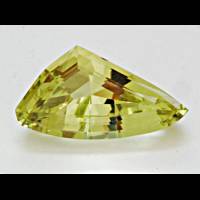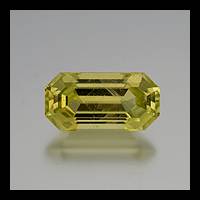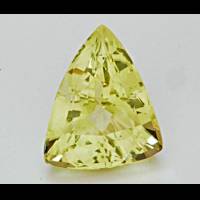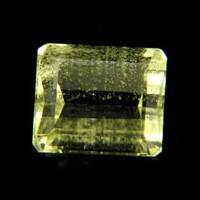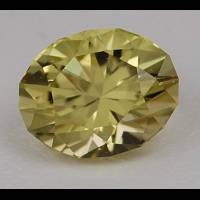Brazilianite

Brazil
3.58 carats
© Rarestone.com
Inclusions are very common and clear faceted gems rarely exceed 15 carats.
Brazilianite Gemstones by Colour
This table shows the variety of hues this gemstone can be found in. Click on a photo for more information.
Brazilianite Gemstones by Size
This table shows distribution of Brazilianite gemstone sizes that are listed on this site. This can give a good indication as to the general availability of this gemstone in different sizes.
Contributed photos
Lightest:0.46 cts
Heaviest:9.11 cts
Average:3.00 cts
Total photos:16
Do you have a larger Brazilianite? Why not upload a photo?
| General Information | ||||||||||||||||||
|---|---|---|---|---|---|---|---|---|---|---|---|---|---|---|---|---|---|---|
| Chemical Formula |
| |||||||||||||||||
| Brazilianite Treatments | ||||||||||||||||||
| This material has been reported to fade (Sinkankas, 1972) and to lose its greenish color completely on being heated above 140°C; irradiation did not reverse this change (Requardt et al, 1982) - Nassau (1984) | ||||||||||||||||||
| Physical Properties of Brazilianite | ||||||||||||||||||
| Mohs Hardness | 5.5, Blue Chart Gem Identification (2010) More from other references | |||||||||||||||||
| Specific Gravity | 2.98 to 2.99, Gemstones of the world (2001) More from other references | |||||||||||||||||
| Tenacity | Brittle, Blue Chart Gem Identification (2010) More from other references | |||||||||||||||||
| Cleavage Quality | Good, Gemstones of the world (2001) More from other references | |||||||||||||||||
| Fracture | Conchoidal, Gems, Sixth Edition (2006) More from other references | |||||||||||||||||
| Optical Properties of Brazilianite | ||||||||||||||||||
| Refractive Index | 1.602 to 1.625, Blue Chart Gem Identification (2010) More from other references | |||||||||||||||||
| Optical Character | Biaxial/+, Blue Chart Gem Identification (2010) More from other references | |||||||||||||||||
| Birefringence | 0.018 to 0.021, Blue Chart Gem Identification (2010) More from other references | |||||||||||||||||
| Pleochroism | Very weak, Gemstones of the world (2001) More from other references | |||||||||||||||||
| Dispersion | 0.014, Gems, Sixth Edition (2006) More from other references | |||||||||||||||||
| Colour | ||||||||||||||||||
| Colour (General) | Green, yellowish-green, Gemmological Tables (2004) More from other references | |||||||||||||||||
| Transparency | Transparent, Gemmological Tables (2004) More from other references | |||||||||||||||||
| Lustre | Vitreous, Gemstones (2009) | |||||||||||||||||
| Fluorescence & other light emissions | ||||||||||||||||||
| Fluorescence (General) | None, Gemstones of the world (2001) More from other references | |||||||||||||||||
| Crystallography of Brazilianite | ||||||||||||||||||
| Crystal System | Monoclinic, Blue Chart Gem Identification (2010) More from other references | |||||||||||||||||
| Habit | Characteristically equant or spear-head shaped crystals, Gems, Sixth Edition (2006) More from other references | |||||||||||||||||
| Geological Environment | ||||||||||||||||||
| Where found: | It occurs in phosphate-rich zones of granite pegmatites., Gems, Sixth Edition (2006) | |||||||||||||||||
| Further Information | ||||||||||||||||||
| Mineral information: | Brazilianite information at mindat.org | |||||||||||||||||
| Significant Gem Localities | ||||||||||||||||||
| ||||||||||||||||||





